LisbonLisboaPortugal.com
The best independent guide to Lisbon
LisbonLisboaPortugal.com
The best independent guide to Lisbon
One week in Lisbon; a 7-day itinerary and tour for 2025
A one-week holiday provides the perfect opportunity to discover the full breadth of Lisbon and its surrounding region. This extended timeframe allows you to move beyond a simple city break and experience the rich diversity of central Portugal, combining the best of the capital with the charming towns and magnificent coastlines that lie just a short journey away.
You can dedicate several days to exploring Lisbon's distinct neighbourhoods, from the historic Alfama to the monumental waterfront of Belém. The rest of your week can then be spent discovering the fairytale palaces of Sintra, relaxing in the coastal town of Cascais, or enjoying the stunning beaches of the Serra da Arrábida coastline.
This guide provides a suggested seven-day itinerary designed to showcase the best of the city and the region. The plan balances Lisbon's must-see attractions with popular day trips and time for relaxation, helping you make the absolute most of your week-long holiday.
One week in Lisbon; an overview
It takes three days to fully discover Lisbon, and the further four days are filled with day trips to the fascinating towns of the surrounding region. Between May and September, you may instead wish to spend a day visiting one of the beautiful beaches in the area (Lisbon beach guide)
Below is a recommended 1-week itinerary for your holiday to Lisbon:
• Day 1 – Alfama, Baixa and Bairro Alto districts
• Day 2 – Belem, Alcântara and Estrela districts
• Day 3 – Parque das Nações, Avenida da Liberdade and Príncipe Real
• Day 4 – Day trip to Sintra
• Day 5 – Day trip to Cascais
• Day 6 – Day trip to Obidos
• Day 6 alternative – Beach trip to the Praia de Carcavelos
• Day 7 – Day trip to Setubal or Sesimbra
• Friday or Saturday – a big night out in Bairro Alto and Cais do Sodré districts
Note: Lisbon has excellent public transport, and all of the day trip destinations can be easily reached without the need for a car.
The interactive map below shows the 1-week tour (Note: zoom in and out to see all of the points)
Sights of the tour - Day One; 1) Alfama 2) Baixa 3) Bairro Alto Day Two; 4) Belem 5) Alcântara Day three; 6) Parque das Nações 7) Avenida da Liberdade 8) Príncipe Real Day four) 9) Sintra 10) Palácio Nacional da Pena (Pena Palace) 11) Quinta da Regaleira Day five; 12) Cascais 13) Cabo da Roca Day six; 14) Obidos 15) Praia de Carcavelos beach Day seven; 16) Setubal 17) Sesimbra 18) Cabo Espichel
For a detailed guide to your first three days in Lisbon, please read this guide – Lisbon three days
Advice: On Day 6, it is recommended for you to join an organised tour and discover the region north of Lisbon. These tours take in many of the fascinating towns of the region, such as the pretty walled town of Obidos, the charming beach resort of Nazare, the stunning monastery at Batalha and the important pilgrimage destination of Fatima.
We have worked with GetYourGuide for the last six years, and some of their best tours include:
The following section details the sights and activities for your one-week holiday to Lisbon.
Day 1 - Alfama, Baixa and Bairro Alto
The first day is spent within the historic centre of Lisbon and visits three very different districts; Alfama, Baixa, and Bairro Alto. This area contains many of Lisbon's famous tourist attractions and provides a perfect introduction to the city.
The Baixa district comprises of magnificent plazas and grand avenues, and was completely rebuilt after the devastating 1755 earthquake. Within Baixa you will find the impressive Praça do Comércio, Rossio plaza and the bustling shopping street of Rua Augusta.
Alfama is the oldest district of Lisbon and is a maze of narrow streets that meander up a steep hill to the castle. Many of Lisbon's oldest buildings can be found in Alfama, including the Sé Cathedral and the Castelo de São Jorge.
The Bairro Alto is the nightlife centre of Lisbon. The district comes alive as the sunsets, and is packed with a variety of small bars, family-run restaurants and intimate live music venues.
Related articles: Alfama guide – Baixa guide
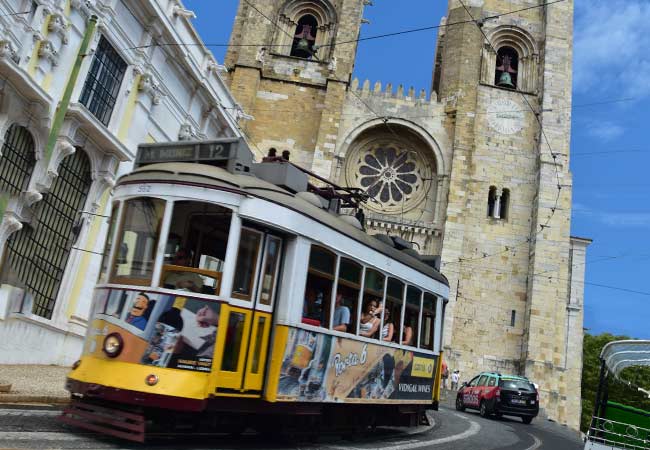
The number 28 tram passing in front of the Se cathedral in the Alfama district
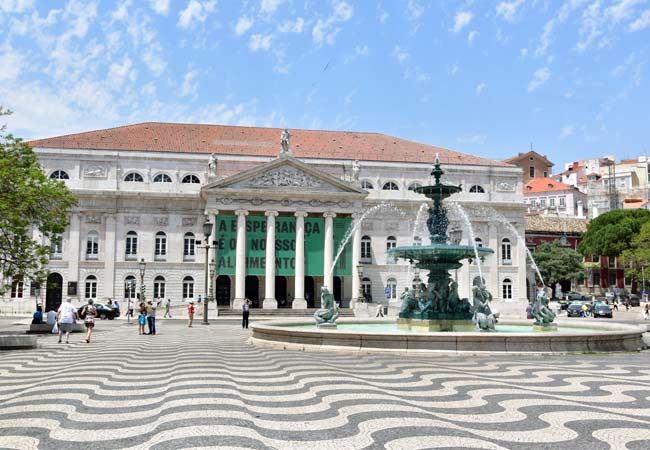
Rossio plaza, with its distinctive tiled pavements
Day 2 – Belem and Alcântara districts
Belem is one of the best tourist areas of Lisbon, and the majority of your day will be spent here.
Belem lies to the west of the city and was historically the location of Lisbon's shipyards. It was from here that 16th-century Portuguese explorers set sail to discover the sea routes to Brazil and India.
The Belem district is a delightful mix of parks and historic buildings that celebrate this seafaring history. There is the wonderous Mosteiro dos Jerónimos, the charming Torre de Belém and the magnificent Padrão dos Descobrimentos monument.
Belem also has a selection of fascinating museum including the Museu Nacional dos Coches, Museu de Marinha and the Coleção Berardo art gallery. Along with the historical sights, there are scenic riverside walks along the Tejo Estuary.
Insight: The E15 tram connects central Lisbon to Belem.
For the latter part of the day, you could visit the Alcântara area of Lisbon, which is home to the Lx Factory. This is the artisan centre of Lisbon, where an abandoned factory has been transformed to create a trendy complex packed with unique stalls, restaurants and contemporary art exhibits.
An alternative to Alcântara could be a visit the Estrela district, with its magnificent Basílica da Estrela and peaceful Jardim da Estrela. Estrela is also at the start of the number 28 tram route, which offers a scenic journey through the historic areas of Lisbon.
Related articles: A guide to Belem
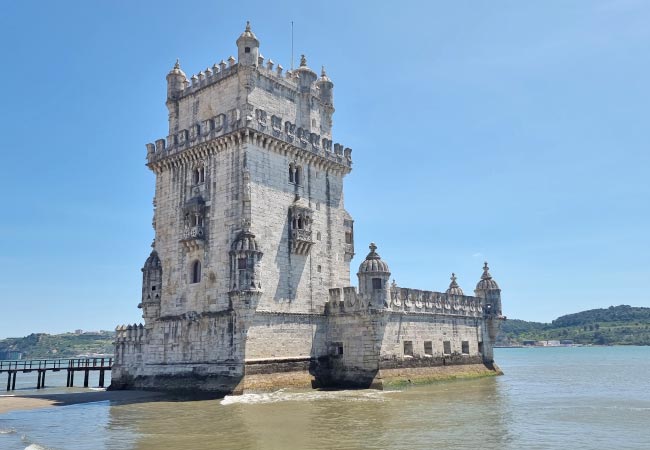
The delightful Torre de Belém
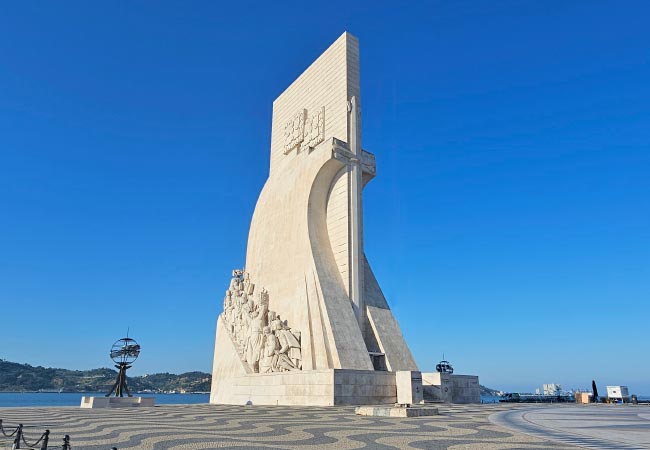
The Padrão dos Descobrimentos monument celebrates Portugal’s seafaring history
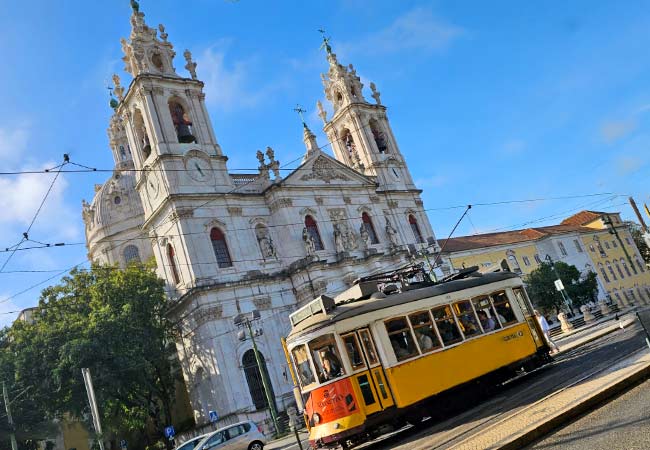
The 28 tram in front of the Basílica da Estrela
Have you booked your hotel yet?
During the peak season, demand for hotels and accommodation in Lisbon is very high. It is recommended that you book your accommodation as early as possible to secure the best prices.
The map below shows the location of hotels and rental rooms in Lisbon. By altering the date to suit your trip, the map will display current availability and prices:
Booking.comDay 3 - Parque das Nações, Príncipe Real and Avenida da Liberdade
The third day is divided between two very different areas of Lisbon; the Parque das Nações and the Avenida da Liberdade (and Príncipe Real district).
The Parque das Nações is the striking modern side to historic Lisbon. It was originally constructed for the world trade fair "Expo'98" and is filled with ultra-modern buildings, bold architecture and water-themed gardens. Sights of Parque das Nações include the Oceanário de Lisboa (a sea themed aquarium) the Casino Lisboa, a cable car and the Torre Vasco da Gama - Lisbon’s tallest building.
The second part of the day, visits the affluent neighbourhoods of Avenida da Liberdade and Príncipe Real. The Avenida da Liberdade is Lisbon's most exclusive shopping street; along the avenue are designer stores, upmarket hotels, and pretty formal gardens.
Príncipe Real is an affluent neighbourhood, with a distinctly Portuguese atmosphere. At its centre is the Jardim do Príncipe Real, and the surrounding streets are lined with grand 20th-century buildings.
Related articles: The Parque das Nações - Guide to Príncipe Real
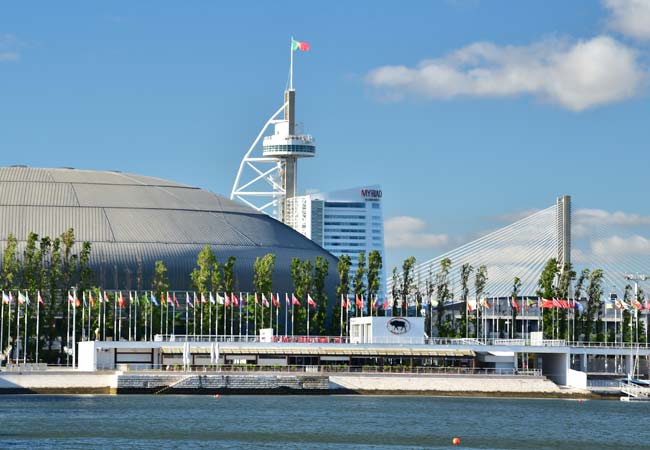
Parque das Nações is the modern side of Lisbon
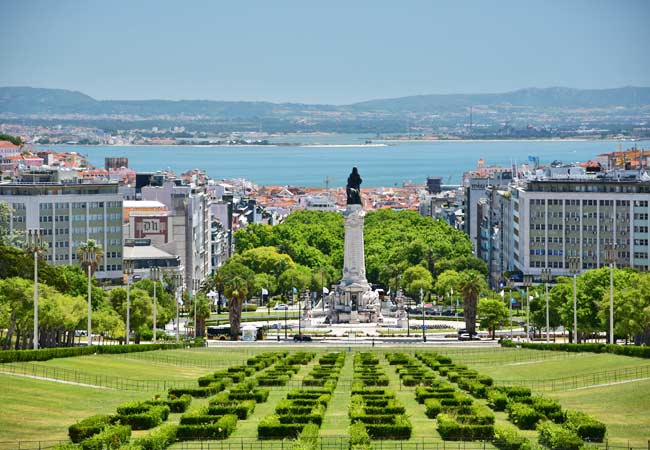
The Miradouro do Parque Eduardo VII viewpoint looking down to the Avenida da Liberdade
Day 4 – Day trip to Sintra
Sintra is the best day trip from Lisbon.
Nestled within the pine-covered hills of the Serra de Sintra, the town is home to extravagant palaces, magnificent mansions and the ruins of an ancient castle. In addition to the historical sights there are challenging hiking trails, stunning scenery and some of the best rock climbing Portugal has to offer.
The standout monument of Sintra is the Palácio Nacional da Pena, a whimsical palace with a beautifully restored interior. Perched upon a rocky outcrop above Sintra are the ruins of a 9th-century Moorish castle, while in the centre of the town is the Quinta da Regaleira and its mystical gardens.
Visitors often spend just a single day in Sintra, but there are enough sights to fill two days of sightseeing: First day in Sintra
• Exploring the historic centre
• The ruins of the Castelo dos Mouros
• The Palácio Nacional da Pena (highlight of the day)
• The Parque e Palácio da Pena
Second day in Sintra
• Quinta da Regaleira and gardens (highlight)
• The Palácio Nacional de Sintra
• Palácio de Seteais
• Palácio de Monserrate
• Vila Sassetti and the hill hiking paths
Travel: There is a direct train between Lisbon to Sintra, and the number 434 bus connects Sintra train station to the main tourist sights.
Related articles: Guide to Sintra – Lisbon to Sintra
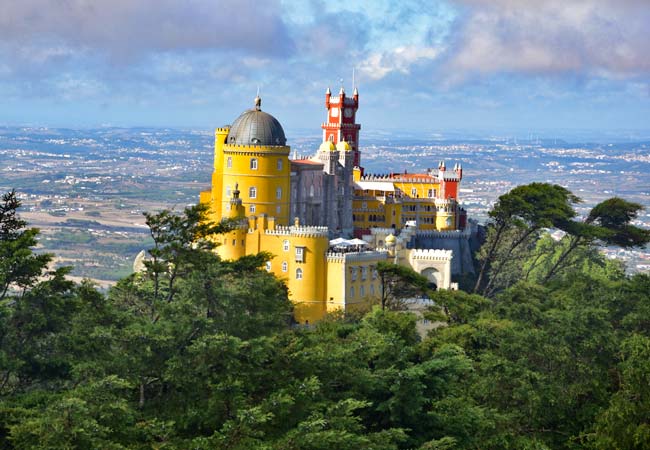
The Palácio Nacional da Pena
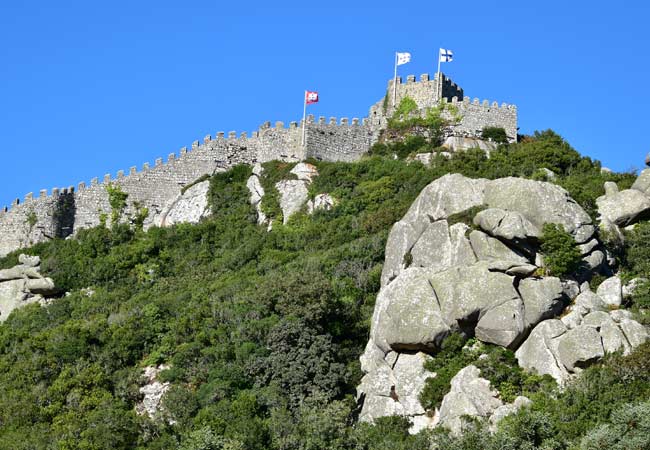
The Castelo dos Mouros
Day 5 - Day trip to Cascais
Cascais is the premier resort town of the Lisbon region.
The town lies on a beautiful coastline of small sandy beaches and was historically the summer retreat of the Portuguese nobility.
Today Cascais is a delightful mix of grand 19th-century architecture and its traditional fishing heritage. Found within the town is the decorative Condes de Castro Guimarães museum, the Casa de Santa María and the heavily fortified Cidadela de Cascais.
Cascais’ beaches are sandy and sheltered, making them popular with families, and include the Praia da Rainha, the Praia da Conceição and the Praia da Duquesa. To the north of Cascais, the coastline faces the might of the Atlantic Ocean, and found here is the wonderful surfing beach of Praia do Guincho.
If you have a car, you could visit the Cabo da Roca headland, the most westerly point of mainland Europe.
Travel: There is a direct train from Lisbon to Cascais.
Related articles: Cascais guide - Lisbon to Cascais
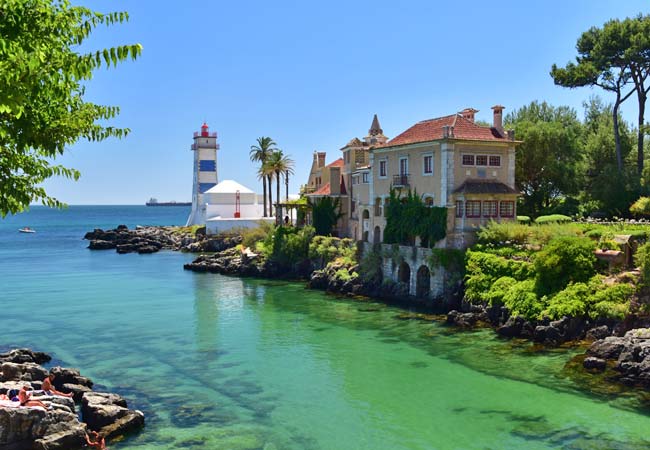
Cascais is a delightful mix of beautiful beaches and historic buildings
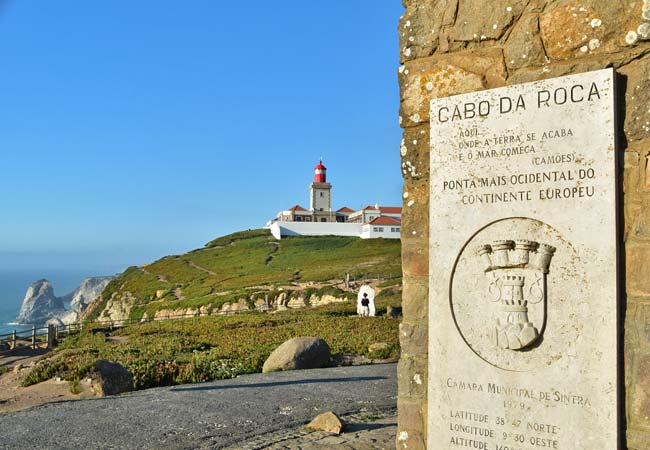
The Cabo da Roca headland
Day 6 – Obidos or a day on the beach
Obidos is the classic Portuguese walled town and is one of the most picturesque towns of the Lisbon region. This small town was historically owned by the Queen of Portugal and is a delightful mix of cobbled streets and traditional houses that are encircled by the town walls. Obidos overlooks the tranquil Lagoa de Óbidos lagoon, and further along the coastline is the fishing port of Peniche.
Travel: There is a bus service from Lisbon to Obidos.
During the hot summer months, you may prefer to visit one of Lisbon's beautiful beaches. Lisbon boasts two very different coastlines, with beaches that range from calm and picturesque to wild, windswept surfing beaches.
To the west of Lisbon are the popular beaches of the Oeiras-Estoril-Cascais coastline, a series of sandy beaches that are suitable for families and popular with the residents of Lisbon. To the south of Lisbon are the pristine beaches of the Costa da Caparica coastline, a sandy coastline that extends for over 25km along the western side of the Setubal Peninsula. These beaches face a westerly direction and have waves that are suitable for surfing.
Note: The weather is suitable for spending time on the beach from May until the end of September.
Insight: The best beach close to Lisbon is the Praia de Carcavelos. This is a vast sandy beach, with clean sea waters and excellent tourist facilities, and is only a short train ride from central Lisbon.
Related articles: Obidos guide - Lisbon beach guide - Carcavelos beach

Obidos is the classic Portuguese walled town
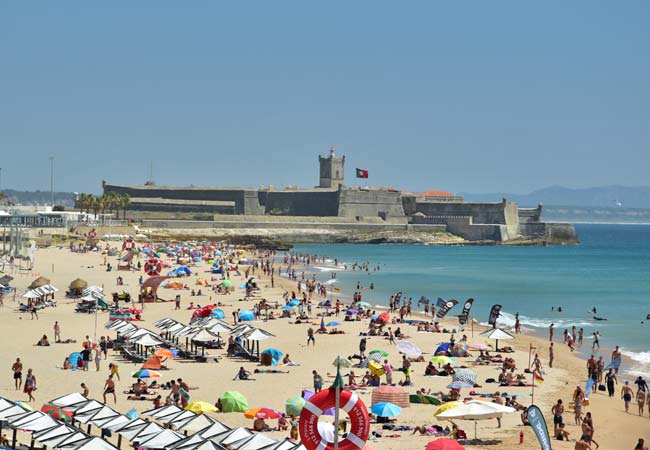
The Praia de Carcavelos beach on a busy summer’s day
Day 7 – Day trip to Setubal or Sesimbra
For your final day, it is suggested to visit either Setubal or Sesimbra.
Setubal is a characterful and historic port city, with an impressive fort, Portugal's largest covered market and a pretty waterfront.
Sesimbra is a traditional beach resort that is popular with Portuguese tourists. The town extends around a beautiful sandy bay and is famed for its seafood restaurants.
Sesimbra and Setubal are very different destinations, but they both have an authentic Portuguese atmosphere and are significantly less touristy than all of the previous day trips.
Situated between Setubal and Sesimbra are the hills of the Serra da Arrabida and the beautiful beaches of the Portinho da Arrábida coastline.
Travel: Setubal is connected to Lisbon by train, and there are regular buses between Lisbon and Sesimbra.
Related articles: Setubal guide - Sesimbra guide
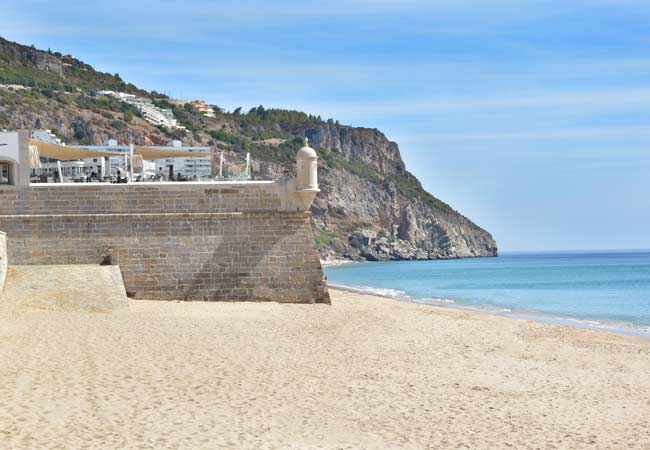
The beautiful beach of Sesimbra
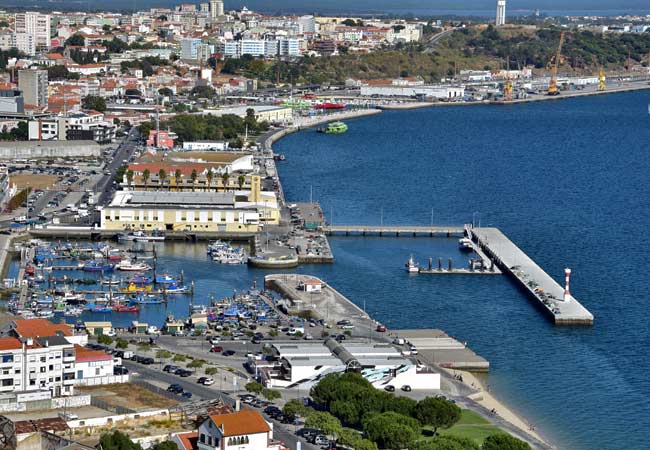
The waterfront of Setubal
Friday or Saturday Night
There are two main nightlife areas to enjoy in Lisbon: Bairro Alto and Pink Street (in Cais do Sodré).
Bairro Alto is a warren of narrow streets and the home to a variety of Fado music restaurants and a wide variety of bars. On weekends, the socialising spills out onto the streets, with the whole district becoming one giant party.
The bars in Bairro Alto close around 2am, but the fun continues downhill in the Cais do Sodré district. Cais do Sodré was originally a red-light district, but today is the late-night heart of Lisbon, with many of the clubs situated along Pink Street.
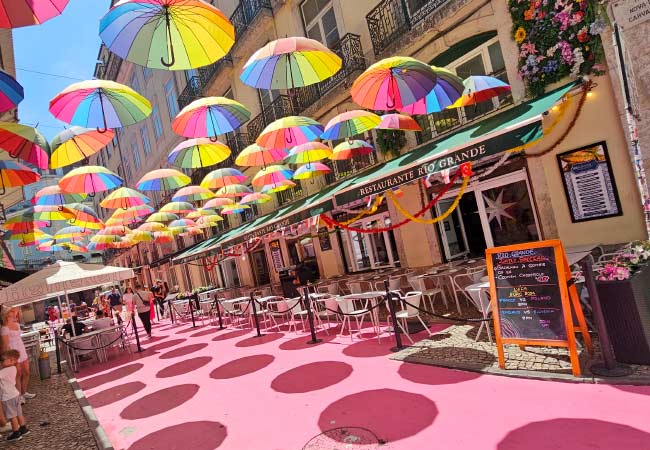
Pink Street
Discover more of Lisbon with our most popular guides
If you've found our content valuable, we'd welcome your support.
The digital publishing landscape has evolved significantly. As a small independent publisher, we face growing challenges. Search engines increasingly favour paid content over organic results, while AI-generated content often reproduces original work without attribution.
To support our work, please consider bookmarking this page (press Ctrl + D) for quick access. If you find an article helpful, we'd be grateful if you'd share it with friends on social media.
For specific questions, please see our Reddit community at r/LisbonPortugalTravel.
Should you notice any outdated or incorrect information, please contact us at [email protected]
Thank you for helping us continue to provide valuable content in an increasingly challenging digital environment.
A complete list of all of our Lisbon articles
If you've found our content valuable, we'd welcome your support.
The digital publishing landscape has evolved significantly. As a small independent publisher, we face growing challenges. Search engines increasingly favour paid content over organic results, while AI-generated content often reproduces original work without attribution.
To support our work, please consider bookmarking this page (press Ctrl + D) for quick access. If you find an article helpful, we'd be grateful if you'd share it with friends on social media.
For specific questions, please see our Reddit community at r/LisbonPortugalTravel.
Should you notice any outdated or incorrect information, please contact us at [email protected]
Thank you for helping us continue to provide valuable content in an increasingly challenging digital environment.



































